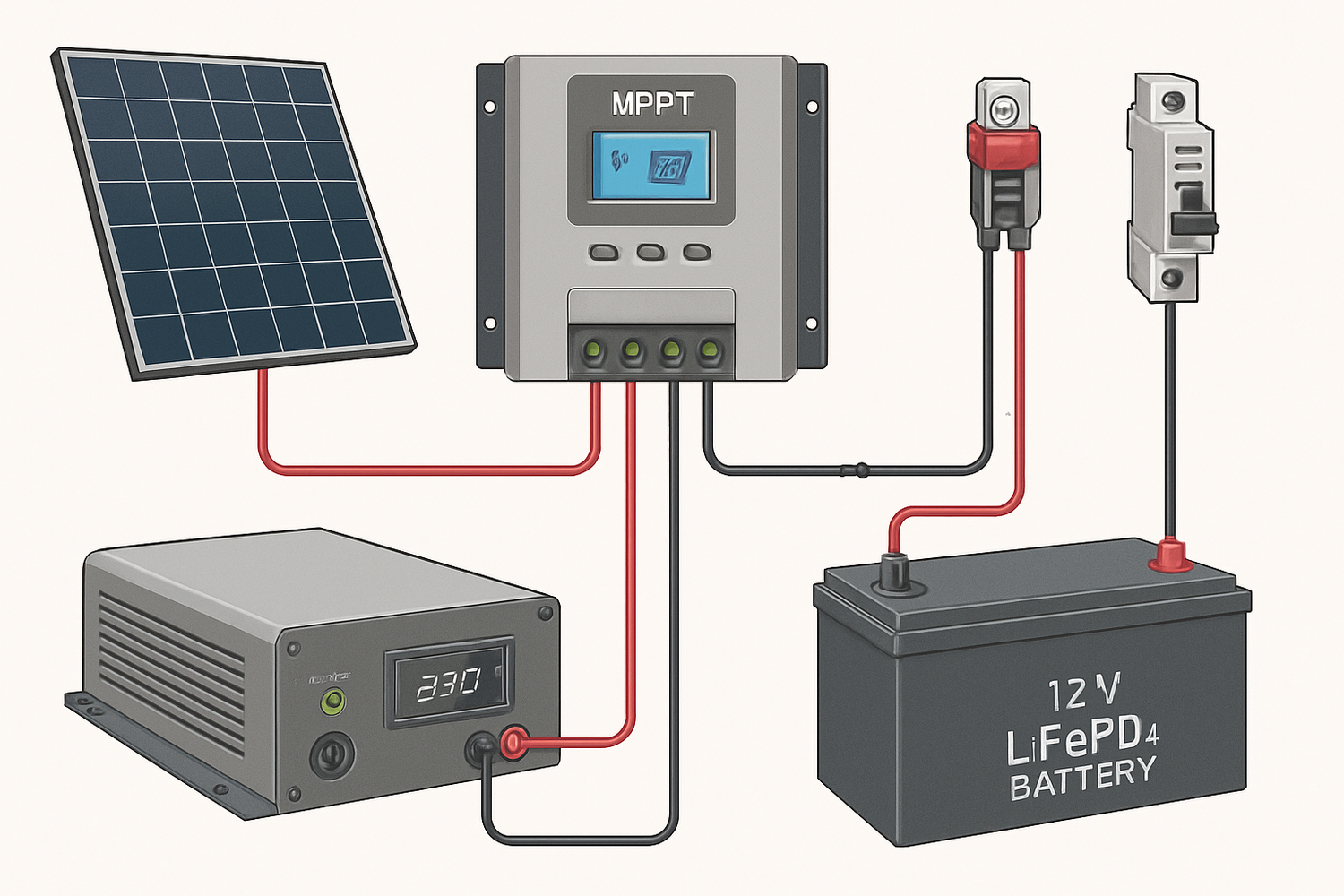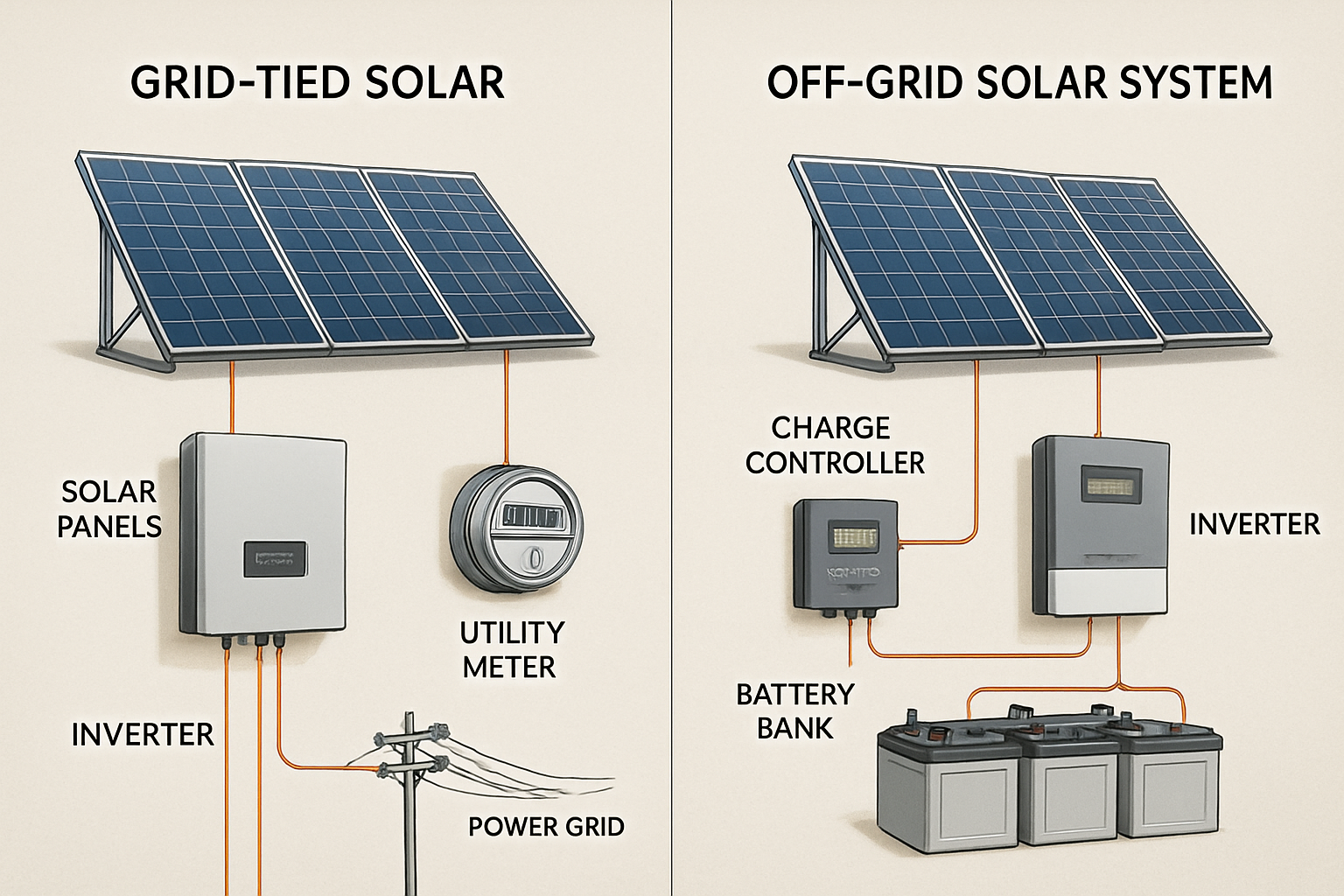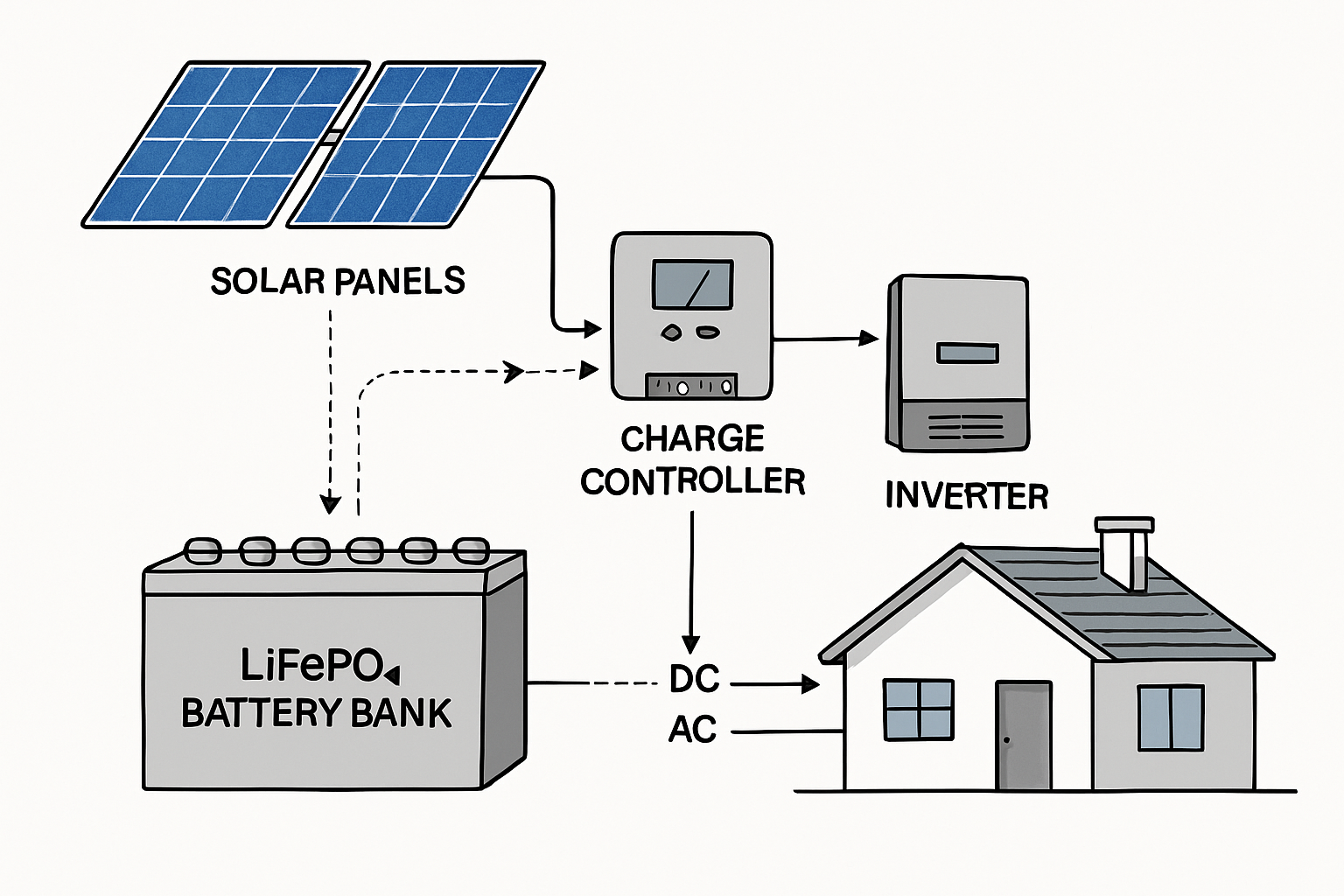Building a reliable energy storage system is the cornerstone of achieving energy independence. Among the available technologies, 12V Lithium Iron Phosphate (LiFePO4) batteries have emerged as a leading choice for their safety, longevity, and efficiency. This text provides a professional blueprint for designing a robust 12V LiFePO4 storage system, focusing on correct component selection, clear configuration, and uncompromising safety standards.
Core Components of Your 12V LiFePO4 System
A successful off-grid power system blueprint begins with high-quality components. Each part plays a critical role in the system's overall performance and safety.
The Heart of the System: LiFePO4 Batteries
The LiFePO4 battery is the central component of your energy storage solution. Its stable chemistry makes it significantly safer than other lithium-ion variants, and it offers a much longer cycle life, often exceeding thousands of cycles. When planning your 12V battery bank configuration, you'll need to calculate your daily energy consumption to determine the required capacity, measured in Amp-hours (Ah). For greater capacity, you can connect multiple 12V 100Ah or 200Ah lithium batteries in parallel. This configuration increases the total Amp-hours while keeping the voltage at 12V.
The Brains: Charge Controller and Inverter
The solar charge controller and inverter are the intelligent managers of your system. A Maximum Power Point Tracking (MPPT) charge controller is highly recommended as it optimizes the power harvested from your solar panels, adjusting its input to capture the maximum available energy. The inverter converts the Direct Current (DC) power stored in your batteries into Alternating Current (AC) power, which is used by most household appliances. Choosing a pure sine wave inverter ensures that even sensitive electronics run smoothly and without risk of damage.
The Power Source: Solar Panels
Solar panels are your system's generator. A typical PV system includes not just the panels but also a balance of system (BOS) components like inverters, wiring, and protection devices, all of which are critical for a functional setup. The selection of solar panels should be based on your energy needs and the specifications of your charge controller. Ensure the total voltage and current from the panels are within the acceptable range of your controller to prevent damage and maximize efficiency.
Designing the System: Wiring and Configuration
A precise design is crucial for a safe and efficient system. This involves creating a clear diagram and using appropriate wiring techniques.
Crafting the Solar Energy Storage Diagram
Before making any connections, creating a detailed solar energy storage diagram is essential. This visual plan maps out every connection, from the solar panels to the charge controller, the battery bank, and finally to the inverter and your loads. A well-drawn diagram minimizes errors during installation and serves as a valuable reference for future maintenance. According to the IEA's Next Generation Wind and Solar Power report, integrating battery storage with solar PV is an effective way to increase self-consumption and manage energy flow.
Parallel Configuration for a 12V Battery Bank
To build a larger 12V battery bank, you will connect multiple LiFePO4 batteries in parallel. This means connecting all positive terminals together and all negative terminals together. It is critical to use batteries of the same model, capacity, and age to ensure they charge and discharge evenly. Using busbars for these connections provides a solid and low-resistance path for the current.
Wire Sizing and Connections
Proper wire sizing is a non-negotiable safety requirement. Wires that are too small for the current they carry can overheat, causing a fire hazard and significant voltage drop, which reduces system efficiency. Always use a wire gauge chart to select the correct size based on the amperage and length of the wire run. Ensure all connections are tight and secure to prevent electrical arcing.
Essential Safety and Protection Mechanisms
Safety should be the primary consideration in any electrical system design. An off-grid power system blueprint must include multiple layers of protection.
Overcurrent Protection: Fuses and Breakers
Fuses and circuit breakers are designed to protect your components and wiring from excessive current. They should be installed in several key locations: between the solar panels and the charge controller, between the charge controller and the battery bank, and between the battery bank and the inverter. The rating of each fuse or breaker should be sized appropriately for the component it is protecting, typically about 125% of the maximum continuous current.
Battery Management System (BMS)
Every LiFePO4 battery must have a Battery Management System (BMS). This electronic circuit board is the battery's guardian, protecting it from overcharging, over-discharging, high temperatures, and short circuits. A quality BMS also performs cell balancing, ensuring all cells within the battery pack maintain an equal state of charge, which is vital for the battery's longevity and performance.
System Grounding
Properly grounding all equipment is a fundamental safety measure that protects against electrical faults and lightning strikes. Grounding provides a safe path for stray electrical current to dissipate into the earth, preventing electric shock and equipment damage. Adherence to local electrical codes for grounding is essential for a safe installation.
Performance Monitoring and Optimization
Once your system is built, monitoring its performance allows you to optimize its operation and extend its lifespan. The U.S. Department of Energy has funded projects to resolve interconnection challenges, resulting in a toolkit of best practices for energy storage systems.
Integrating a Battery Monitor
A shunt-based battery monitor is an invaluable tool for tracking your energy usage. It provides real-time data on your battery's state of charge (SoC), voltage, current draw, and remaining capacity. This information helps you make informed decisions about your energy consumption and prevents unintentional deep discharging of your batteries.
Maximizing System Lifespan
To get the most out of your investment, it's important to operate the system within its design limits. Avoid exposing batteries to extreme temperatures and minimize how deeply you discharge them. Understanding the depth of discharge (DoD) and its impact on cycle life is crucial. Detailed data on solar storage performance shows how managing these factors directly correlates to battery longevity.
Wrapping Up Your Blueprint
Designing a 12V LiFePO4 storage system is a methodical process that rewards careful planning and attention to detail. By selecting high-quality components, creating a precise wiring diagram, and implementing robust safety measures, you can build a dependable and efficient off-grid power system. This blueprint provides the foundational knowledge to help you achieve greater energy independence with a system built for reliability and longevity.
Disclaimer: This article is for informational purposes only and does not constitute professional electrical or financial advice. Always consult with a qualified electrician and adhere to all local electrical codes and regulations during installation.
Frequently Asked Questions
Can I mix different LiFePO4 batteries in my 12V bank?
It is strongly advised not to mix batteries of different capacities, ages, or from different manufacturers. Mismatched cells can lead to imbalances, reducing overall performance and potentially damaging the batteries.
What size inverter do I need for my 12V system?
The inverter size depends on the maximum simultaneous AC load you expect to run. Sum the wattage of all appliances you might use at once and choose an inverter with a continuous power rating that exceeds this total. A pure sine wave inverter is recommended for sensitive electronics.
How many solar panels can I connect to a 12V LiFePO4 battery?
This is determined by your charge controller's specifications (maximum voltage and current input) and your daily energy needs. Ensure the total voltage of your solar array does not exceed the controller's limit, and the current is within its rating. Sizing the charge controller correctly involves dividing the total solar panel wattage by the battery bank voltage to find the required amperage rating.





Leave a comment
All comments are moderated before being published.
This site is protected by hCaptcha and the hCaptcha Privacy Policy and Terms of Service apply.